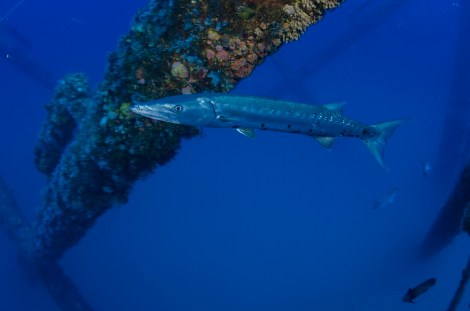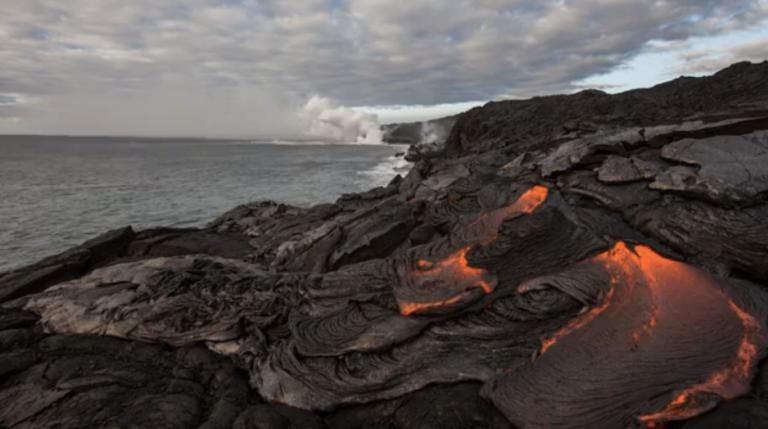For all the harm that the oil and gas industry inflicts on wildlife in the Gulf of Mexico, it does offer the marine ecosystem at least one big benefit. Offshore oil-drilling rigs serve as artificial reefs, providing shelter for animals and an anchor for plants, coral, and barnacles. Yet once a well is tapped, the federal government has required the drilling company to uproot its rig to help clear clutter that could obstruct shipping.
Following complaints from fishermen and conservationists, however, the Obama administration is easing those rules. It announced this week that it is making it easier for states to designate abandoned drilling infrastructure as special artificial reef sites.

Chris Ledford, © Texas Parks and Wildlife DepartmentA barracuda hanging out at a Texas oil rig.
The move is a win-win. Fish, turtles, and other wildlife get to keep their underwater metropolises — and drilling companies can save on the costs of rig removal. From Fuel Fix:
The Bureau of Safety and Environmental Enforcement has revised the policies to encourage participation in its rigs-to-reefs program, which allows operators to leave non-producing platforms deep in the Gulf as artificial homes for underwater creatures.
So, um, thanks to all the penny-pinching oil companies out there that don’t want to pay to clean up their crap?




